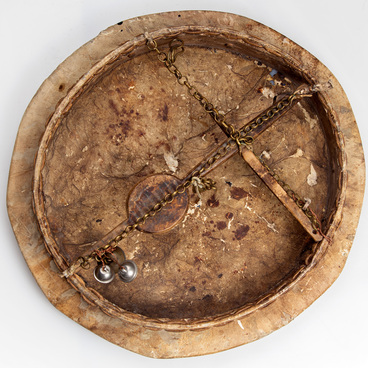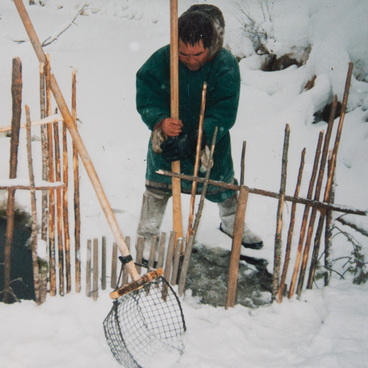People have hunted reindeer for more than 100,000 years, and after its domestication, reindeer husbandry became the main occupation of the peoples living in the taiga and tundra. For the indigenous peoples of the North, the deer is a friend, breadwinner and main value, and the word “deer” is translated from the Nenets language as “giving life”.
In the conditions of the impassible northern routes, reindeer sleds remain the only transport at any time of the year. To travel and transport goods, the Forest Nenets use wooden sleds pulled by reindeer.
The Nenets begin to prepare reindeer for driving a sled once the animals get one year old. To do this, they select the most healthy and hardy animals of medium size. The deer should be calm, obedient and strong. Reindeer are trained gradually: first, the animal must get used to harness, then to empty sleds, later to loaded ones, and only at the very end — to work together with other deer. As a reward, the deer receive salt, one of their favorite treats.
The halter is a belt that is attached to the neck and bridge of the nose of a deer. The belt is a wide strip of deer skin, its length corresponds to the girth of the animal. The belt is worn on the side deer in the sled. The line is a long, up to four meters, thick leather belt with a bone clasp at the end, that connects the harness to the sledges. The strap is a wide strip of rawhide, it has all the traction power of the deer. The straps are very strong and at the same time soft, so as not to harm the animals.
In the conditions of the impassible northern routes, reindeer sleds remain the only transport at any time of the year. To travel and transport goods, the Forest Nenets use wooden sleds pulled by reindeer.
The Nenets begin to prepare reindeer for driving a sled once the animals get one year old. To do this, they select the most healthy and hardy animals of medium size. The deer should be calm, obedient and strong. Reindeer are trained gradually: first, the animal must get used to harness, then to empty sleds, later to loaded ones, and only at the very end — to work together with other deer. As a reward, the deer receive salt, one of their favorite treats.
Reindeer are also taught to use pack saddles, since in arctic conditions it is sometimes necessary to unload sleds while on the way and relocate luggage to the reindeer. The Nenets control the deer with the help of voice commands, and each herder can have their own. They also use a khorey — a thin pole up to five meters long, used to touch the back or sides of the deer. Boys are taught how to handle reindeer from early childhood.
A reindeer sled team can include from one to seven deer — it depends on the type of sled and its purpose. Reindeer harnesses, like sleds, are divided into passenger and cargo ones. The harness for a passenger sled consists of four main parts: a halter, a belt, a line and a strap. There are bone rectangles on the reindeer harness, which serve as both a clasp and decoration.
The halter is a belt that is attached to the neck and bridge of the nose of a deer. The belt is a wide strip of deer skin, its length corresponds to the girth of the animal. The belt is worn on the side deer in the sled. The line is a long, up to four meters, thick leather belt with a bone clasp at the end, that connects the harness to the sledges. The strap is a wide strip of rawhide, it has all the traction power of the deer. The straps are very strong and at the same time soft, so as not to harm the animals.


